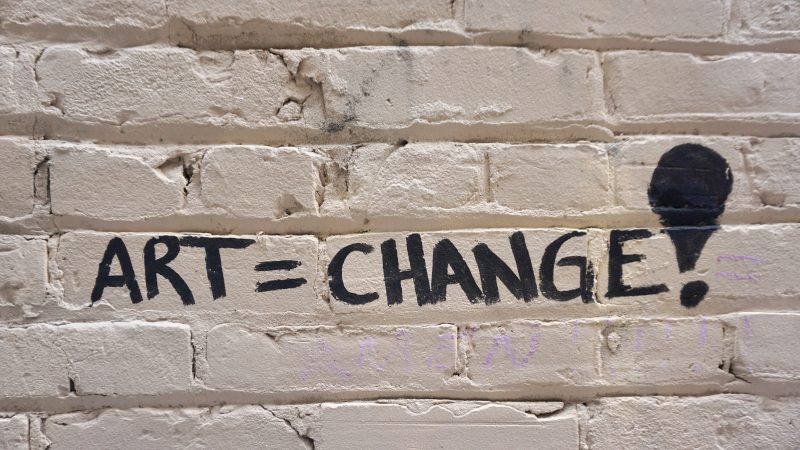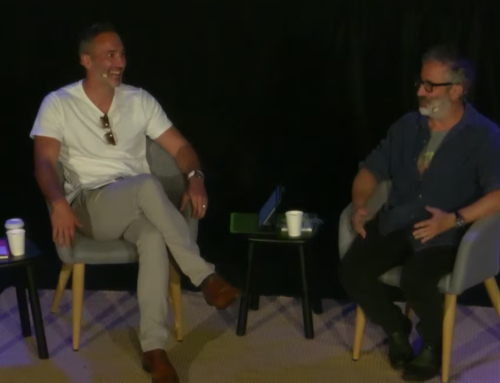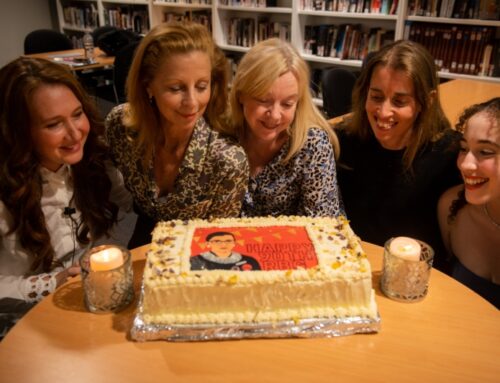For over 3000 years, Jewish people around the world have left the comforts of their homes to eat , and the walls must be impermanent and remain open on some sides, open to passers-by – are outlined in the book of Leviticus, and observed annually in celebration of the Jewish Festival of Tabernacles, known as Succot, following the Jewish New Year and Day of Atonement.
Established as a result of the Jewish people’s the Succah forms the continuous ritual of engaging with society. By setting up residence in the public sphere – open to the world around it – the succah invites those within it to physically, mentally and spiritually face outwards, and embodies the interconnection between individuals and the wider community. The ritual of Succot directly wrestles with the challenges of the global citizen, raising questions about topics ranging from homelessness and displacement, to environmentalism, impermanence, the definition of perfection, and social isolation.
An organic fit for Sculpture by the Sea, the Succah by the Sea installation reimagines this 3000-year-old ritual and structure through a 21st century lens. The project was developed by Shalom, a Jewish cultural organisation in Sydney, and inspired by Reboot’s New York project Sukkah City. The Artistic Directors, Office Feuerman, a Sydney-based design and research studio, have selected six emerging architecture practices to re-examine the succah for installations at Marks Park.
The Succah is a structure with minimal design rules, Hebrew scripture only specifies the number of walls, minimum and maximum heights, and the type of detached plant material that can be used for the roof, offering an architect myriad opportunity for reinvention. Each of the six selected studios has leveraged both ancient design and philosophical guidelines to rethink traditional representations of the succah.
“Inside-Out Succah” faces outwards, initiating conversation in an inclusive community setting. “Sandstone” considers ideas of permanence with the heaviness of stone that is exposed to the corrosion of the elements. Environmentalism is key to the design process of “Supersuccah”, using an algorithm to ensure zero-wastage of materials. “Monolitus Domum” sensitively focuses our attention on the fragility of our natural environment through a singular view to the sky. “Dune,” creates an open home by providing temporary protection from wind and sun. And “A Portable Territory,” with its lightweight and movable structure, fosters interaction in a globalised world.
Together, these six structures form a unique installation, engineered to prompt different layers of community interaction. Tables and benches designed in tandem with the succahs encourage gathering. Their placement communicates not only the core ritual of eating and drinking together in these structures during the festival, but the importance of a global community engaging in meaningful discourse on issues that are fundamental to all. Mirrored metal on the tables and benches modernises this age-old tradition and invites visitors to reflect on the important questions that the Festival of Succot provokes.
To explore ancient texts through a modern lens, to concretise ritual in a meaningful and relevant way, to deep dive into the biggest issues facing society and conceptualise them through hands on, practical and tactile engagements, is to radically reimagine what has gone before. As Rabbi Alan B. Lucas wrote in The Observant Life, “the succah has some very basic requirements, but beyond these rules its construction is left to one’s imagination and creativity.”
For those who annually mark the Festival of Succot – a festival of joy associated with hosting guests and festive meals – the Succah’s design or the environs in which is it located are not of primary concern, with many using kit-sets of plastic tubing and tarpaulins, dismantled and stored away after the seven day-ritual. The same could be said about our inability to engage in difficult discourse about issues fracturing modern society – environmentalism, homelessness, displacement, imperfection – all are challenges that seem to be met with complacency by the mainstream. Few rise to the occasion to find innovative and realistic solutions to the plight of humanity and the world around us. We have increasingly chosen the easy path, we have resorted to following the mundane, we briefly discuss an issue and swiftly dismantle it and store it away.
Succah by the Sea invites a larger project of reimagination, whereby society look outward to the challenges and issues before us, and facing them individually and together, leads to innovation, inspiration, and the elevation of the world around us.
Authored by Rabbi Alon Meltzer and William Feuerman for the Sculpture by the Sea, Bondi 2019 – Catalogue










Well done to the author. Love the post.
Well done to the author. Love the content. May I ask you to contact us so that we can talk?